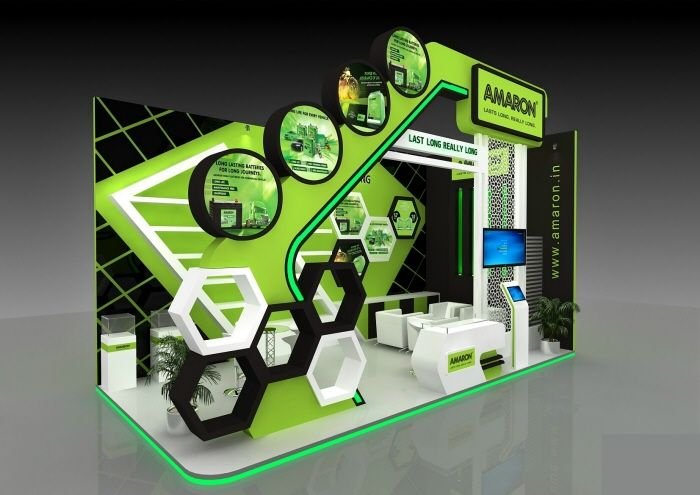Sustainable Exhibition Stands for Modern Trade Fairs

In today’s rapidly evolving event industry, sustainability has moved from being a buzzword to a core principle in exhibition planning. As environmental consciousness grows, modern trade fairs are witnessing a shift toward eco-friendly practices—especially in the design and construction of exhibition stands. Exhibitors are no longer content with just impressive visuals; they want stands that reflect their brand values, especially when it comes to sustainability. This is where the role of experienced professionals, like an Exhibition Stand Builder in Cologne, becomes pivotal. With a deep understanding of both environmental considerations and creative design, they can deliver structures that are both visually compelling and environmentally responsible.
The Rise of Sustainability in Trade Fairs
Sustainability in trade fairs goes beyond simply minimizing waste. It covers a wide range of practices—from using recyclable materials and modular construction to minimizing energy consumption and ensuring responsible disposal. Modern event organizers are increasingly asking exhibitors to follow green guidelines, prompting a shift across the industry. This is not just a trend—it’s a response to a growing need for responsible business practices and regulatory requirements across Europe and beyond.
As a result, exhibitors are turning to stand builders who can deliver innovative solutions that comply with sustainability goals. Whether it’s using LED lighting, sourcing local materials to reduce transportation emissions, or designing modular booths for reuse, the push for sustainability is changing how stands are conceived, built, and dismantled.
Eco-Friendly Materials and Techniques
A key factor in creating a sustainable exhibition stand is selecting the right materials. Traditional stands often involve wood, plastics, and other non-recyclable materials, which contribute to landfill waste after the event. In contrast, sustainable stands prioritize:
- Recyclable or biodegradable materials: Cardboard, aluminum, and bamboo are popular choices due to their low environmental impact and reusability.
- Modular systems: These designs allow parts of the stand to be disassembled and reused for future events, reducing the need for new construction.
- Digital printing with eco-inks: Sustainable printing processes limit the release of harmful chemicals and reduce the carbon footprint.
- Energy-efficient lighting: Replacing traditional bulbs with LEDs significantly cuts power consumption and heat output.
Professionals such as an Exhibition Stand Builder in Cologne are increasingly using these techniques to meet client expectations for greener alternatives while maintaining visual and structural integrity.
The Role of Technology in Sustainability
Technology plays a significant role in enhancing sustainability. Virtual walkthroughs, 3D modeling, and digital planning tools reduce the need for physical mockups, saving time and materials. Additionally, the use of augmented reality (AR) and interactive displays can reduce printed materials and brochures, contributing to less paper waste.
Furthermore, some exhibition stand builders now incorporate smart sensors to monitor energy use in real time, helping exhibitors track their environmental impact and make adjustments during the event. These small innovations can collectively result in substantial energy savings and a reduced carbon footprint.
Reusability and Lifecycle Planning
A sustainable exhibition stand is not just about being eco-friendly during construction—it also considers the entire lifecycle of the stand. This includes how the stand is transported, stored, reused, or recycled after the trade fair. Builders are now working closely with clients to create stands that can be easily packed and reused multiple times with minimal effort and cost.
Lifecycle planning is essential for businesses that attend multiple trade shows throughout the year. Reusing components, modifying graphics instead of full rebuilds, and investing in sturdy yet lightweight materials are strategies that are gaining momentum. This approach not only supports the environment but also offers long-term cost advantages for companies.
Benefits of Sustainable Stands
Sustainable exhibition stands offer several clear advantages:
- Cost-effectiveness: While initial costs might be slightly higher, the reusability of materials and modular components lead to long-term savings.
- Positive brand perception: Eco-conscious designs reflect a company’s commitment to environmental responsibility, which resonates with modern consumers and business partners.
- Regulatory compliance: Many European trade fairs now have sustainability requirements, and eco-friendly stands ensure compliance without last-minute redesigns.
- Operational efficiency: Sustainable designs often result in lighter, easier-to-assemble structures that reduce setup time and labor costs.
Conclusion
As the exhibition landscape evolves, sustainability is becoming a central consideration for trade fair participants. It is not enough to have an attractive booth—today’s exhibitors must also think about their environmental footprint. Integrating sustainability into the design and execution of exhibition stands is not just an ethical decision; it’s a strategic one.
Collaborating with experienced professionals, such as an Exhibition Stand Builder in Germany, ensures that both visual appeal and environmental responsibility are achieved. With thoughtful design, responsible material selection, and innovative technology, sustainable exhibition stands are setting the standard for the future of trade fairs. As the industry continues to embrace these practices, both the planet and the participants stand to benefit.
